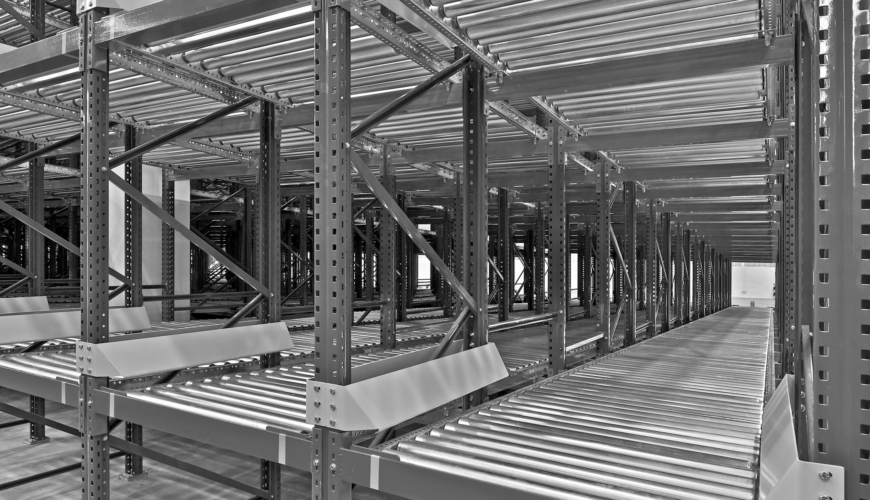Storage racks are perhaps the least glamorous part of a warehouse, but they are the workhorse and serve a valuable role in the supply chain. If yours are aging, opening a greenfield facility, or drastically changing some of the product lines you manage, you’ll want to consider new racking systems. To get it right, you’ll need to consider your space, operations, and various types of racking available. Thinking about your future needs should also be part of the equation.
The first step in determining your storage needs is to assess your space well. If you’re sticking with your existing facility, you’re limited to what you’ve got regarding ceiling height and column spacing. Careful measuring and plotting out your layout are necessary before considering the racking that might fit. With a new build, you can consider the types of racking you want and design with that in mind.
Another consideration is the products you carry/will carry in the future. Know quantities, turns, types of products, and the equipment you’ll be using in the aisles to move those products. You’ll also want to design with your labor pool in mind, ensuring they can efficiently move among your aisles for picking, storing, and shipping.
While it might be difficult to fully plan, you’ll need to plan your storage with that in mind. Think about potential growth and where that might lead. Design your racking systems with flexibility in mind. Single-deep pallet racking is one of the most flexible, for instance, allowing for the ability to scale up when necessary and add or remove beams as configurations change. A look at inventory history and growth projections for the next several years can help with this ability.
With all that in mind, your final step is considering all the available racking options. These can include a mixture of static or flow racking, or automation. The automated storage options might include ASRS, or automated storage and retrieval systems. These systems can take advantage of your cube, extending up to 100 feet. With ASRS in place, you maximize your density and can fit more into a smaller facility.
More traditional racking systems can include any combination of several types of racking. Selective is the most common and is available in either single- or double-deep configurations. It’s generally where companies store their pallets throughout a warehouse. A case or carton-flow racking is a set of shelves with rollers that allow for picking that is immediately replenished when cases or cartons flow forward. There’s also pallet-flow racking, which works in a similar fashion but with pallets instead of cartons or cases.
After those types of racks, you have the options of drive-in racks that allow for lift truck access, push-back racks which are similar and allow you to store pallets up to five deep, and cantilever racking, which can help with products that are particularly long and won’t fit in other racks.
With good planning and consideration, you can assist your supply chain by ensuring success within your warehouse.


